#gekko vittatus
Explore tagged Tumblr posts
Text
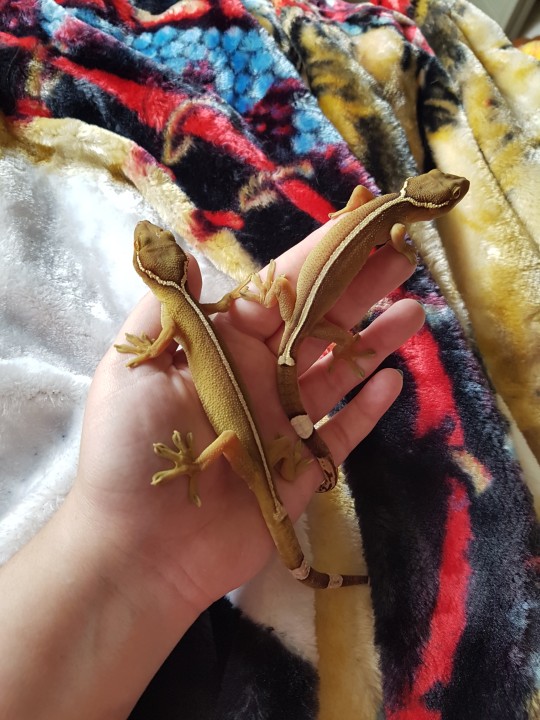
Two beautiful captive bred White Line Geckos
One of these beautiful girls was sent out to Ontario recently! She will be joining another breeding project. A healthy captive bred population means fewer animals taken from the wild! This beautiful species has been exploited by the pet trade. For a long time the majority of animals were wild caught, sold in awful condition for less than $30.
Support captive breeding! Buying from a breeder means you have access to the animal's lineage, care history, feeding schedule, weight, and is generally much cheaper than buying from a store!
There are definitely reputable specialty pet stores out there, which will often purchase stock from local breeders.
These beautiful animals deserve the best of care ♡
85 notes
·
View notes
Text

Lined Gecko (Gekko vittatus), family Gekkonidae, found in Indonesia, New Guinea, and other nearby islands
photograph by Paul Freed
383 notes
·
View notes
Text
huh! the genus Gekko, from dutch "gekko" (common gender) is masculine (as in Gekko vittatus). so I guess that's how it works
in zoology, animal species are given standard "latin" names consisting of two words, the genus name and the species name. typically, the genus name is a noun, and the species name is an adjective. following the rules of latin grammar, adjectives need to agree with nouns with grammatical gender, so if the genus name is a feminine latin noun then all species of that genus are given (in principle) adjectives marked with feminine latin suffixes.
in practice of course, new genus names don't always use actual latin words, so these latin grammatical gender rules need to be grafted onto words that aren't really latin. and this is where one of the weirdest conventions of zoological binomial nomenclature comes in!
how exactly do you determine what the latin grammatical gender of a word is if it isn't a latin word? according to the ICZN, it's simple:
if the word is from greek, use its gender in greek
otherwise, if the word is from a modern european language with grammatical gender that uses the latin alphabet, use the gender in the source language (yes it is that specific)
otherwise, if the name ends with -a it's feminine
otherwise, if the name ends with -um, -u, or -o it's neuter
otherwise, it's masculine
unless of course if the zoologist with naming dibs says explicitly that they think this genus should have an irregular gender.
anyway these rules are fascinating to me. why are they this specific? grammatical gender systems compatible with latin's adjective suffixes are found throughout the entire indo-european language family, so why restrict it to modern european latin-script languages (and greek)? I don't know!
1K notes
·
View notes
Text

1 note
·
View note
Text







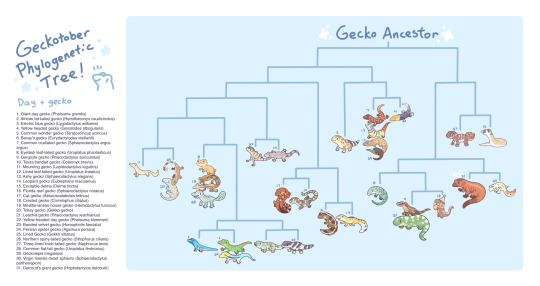
Tiny geckos [4/4] + Phylogenetic Tree
25 - Lined Gecko (Gekko vittatus) 26 - Northern spiny-tailed gecko (Strophurus ciliaris) 27 - Three-lined knob-tailed gecko (Nephrurus levis) 28 - Common flat-tail gecko (Uroplatus fimbriatus) 29 - Geckolepis megalepis, a species of fish-scale gecko 30 - Virgin Islands dwarf sphaero (Sphaerodactylus parthenopion) 31 - Delcourt's giant gecko (Hoplodactylus delcourti)
205 notes
·
View notes
Photo

Australasian Journal of Herpetology 38:6-18.
Published 10 August 2018.
INTRODUCTION
The Asian gecko genus Gekko Laurenti, 1768 as recognized by
most herpetologists in 2018 includes a significant array of
sometimes large and spectacular species. About 60 described
forms are currently recognized as species. However others await
resurrection from synonymy or formal scientific description for
the first time, meaning that species diversity of the genus as
recognized is underestimated.
This paper arose out of a global audit of the planet’s
herpetofauna, including the geckos, with a view to correcting the
genus-level classification in light of information that has
emerged in the past century.
Since the publication of major texts by Boulenger and
contemporaries at the end of the 1800’s, much of the genuslevel
taxonomy of the world’s reptiles has not been changed or
updated to better reflect phylogeny and divergences between
groups of species.
To that end, various phylogenies published in the past decade
(e.g. Heinicke et al. 2012 or Pyron et al. 2013) have shown the
genus Gekko as recognized in 2018 to be of ancient origin and
other morphologically similar genera to place within the Gecko
tree.
Even within Gekko sensu stricto Heinicke et al. (2012) show
divergence between taxa in excess of 50 MYA, while Oliver et al.
(2017) claim divergences in excess of 30 MYA.
Rather than merge dozens more disparate species into an even
greater-sized genus, this paper is one of a series dividing the
A significant improvement to the taxonomy of the gecko genus
Gekko Laurenti, 1768 sensu lato to better reflect morphological
diversity and ancient divergence within the group.
RAYMOND T. HOSER
488 Park Road, Park Orchards, Victoria, 3134, Australia.
Phone: +61 3 9812 3322 Fax: 9812 3355 E-mail: snakeman (at) snakeman.com.au
Received 29 March 2017, Accepted 15 June 2018, Published 10 August 2018.
ABSTRACT
The Asian gecko genus Gekko Laurenti, 1768 as recognized by most herpetologists in 2018 includes a
significant array of sometimes large and spectacular species. About 60 described forms are currently
recognized as species. However others await resurrection from synonymy or formal scientific description for
the first time, meaning that as of 2018, species diversity is underestimated.
Various phylogenies published in the past decade (e.g. Heinicke et al. 2012, Pyron et al. 2013, Oliver et al.
2017) have shown the genus Gekko to be of ancient origin and other morphologically similar genera to place
within the Gecko tree.
Even species within Gekko sensu stricto Heinicke et al. (2012) show divergence between taxa in excess of 50
MYA., while Oliver et al. (2017) claim divergences well in excess of 30 MYA.
Rather than merge dozens more disparate species into an even greater-sized genus, this paper is one of a
series dividing the complex of genera into monophyletic species groups at the genus level based on
divergence and morphology. The division of groups in this and other papers published at the same time
dealing with the complex is extremely conservative relative to dates of divergence splits in other widely
recognized reptile genera
This paper deals with the genus Gekko Laurenti, 1768 as currently recognized, excluding those species
closely associated with the taxon originally described as Gekko vittatus Houttuyn, 1782, which is dealt with in
another paper.
In summary the genus Gekko is herein split along lines similar to the species groups identified by Rösler et al.
(2011), with the most divergent groups being treated as genera and subgenera. The result is 6 genera
(including the Gekko vittatus Houttuyn, 1782 species group) and further subgenera.
Four genera and six subgenera are formally named for the first time according to the rules of the International
Code of Zoological Nomenclature (Ride et al. 1999).
Keywords: Gecko; taxonomy; reptile; nomenclature; Asia; Gekko; Luperosaurus; Pseudogekko;
Lepidodactylus; Ptychozoon; Scelotretus; new genus; Sparsuscolotes; Lautusdigituscolotes; Magnaocellus;
Extentusventersquamus; New subgenus; Sinogekko; Aurumgekko; Glanduliscrusgekko; Cavernagekko;
Foderetdorsumgekko.
1 note
·
View note
Photo

Male Gekko Vittatus out hunting. #gecko #gekkovittatus #skunkgecko #reptiles #designerexotics http://ift.tt/2wCG2Qi
4 notes
·
View notes
Text







Natasha Romanoff (White-lined gecko (Gekko vittatus) enjoying some applesauce, exploring the coffee table 😊
0 notes
Text
Second baby is out!:


Newly hatched baby with full grown father:

And a couple older siblings basking:

2 notes
·
View notes
Text
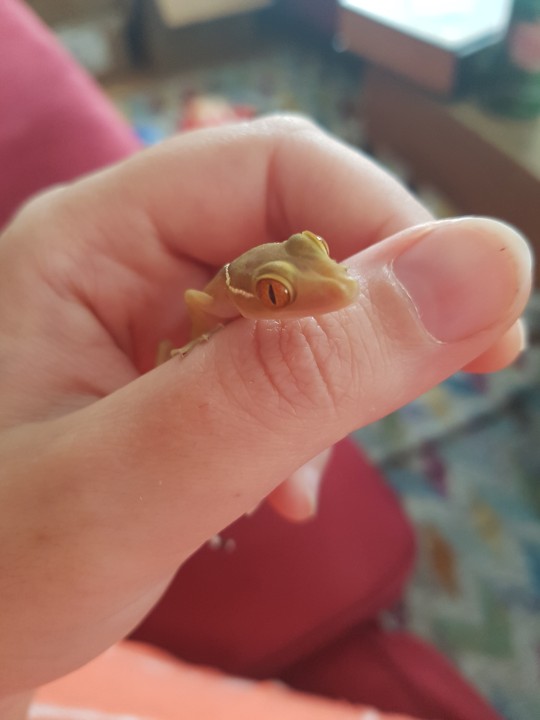
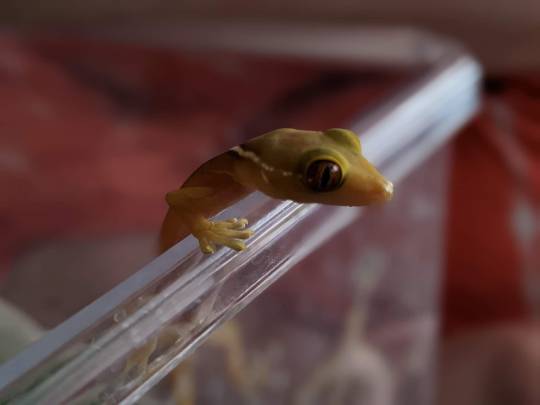
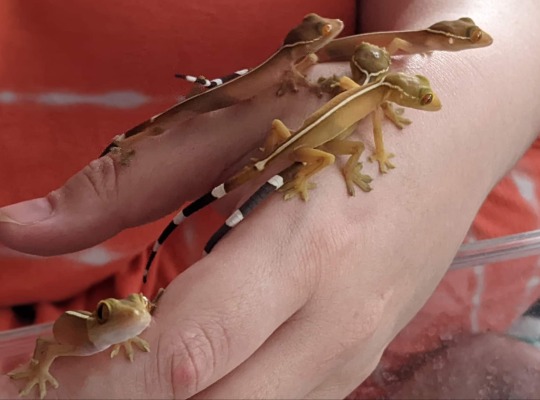
Captive bred baby White Line Geckos!
Terribly underappreciated species. They're absolutely gorgeous!
29 notes
·
View notes
Text

Lined Gecko (Gekko vittatus), family Gekkonidae, found in Indonesia, New Guinea, and other nearby islands
photograph by https://www.roonami.com/
121 notes
·
View notes
Text
1 note
·
View note
Text
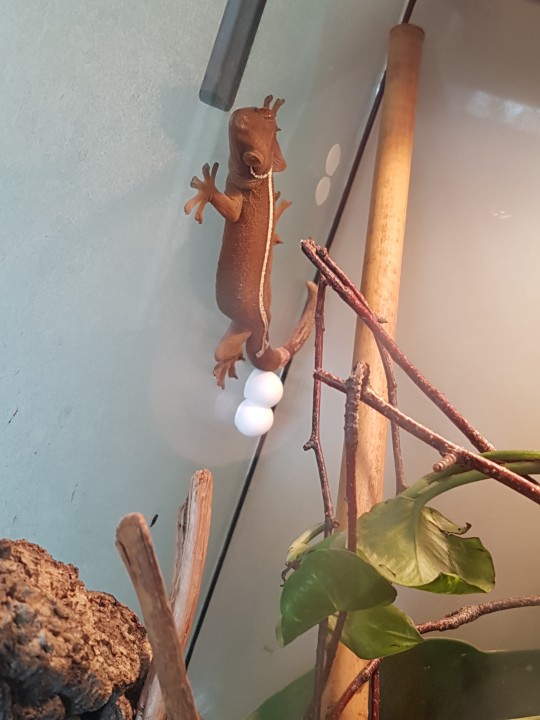
Momma Stella letting me know she'll kick my butt if I bother her eggs!
34 notes
·
View notes
Text

Grant, male Gekko vittatus
20 notes
·
View notes
Text

Stella and eggs. Busy girl!
17 notes
·
View notes
Text

Female White Line Gecko
vs
Female Tokay Gecko
8 notes
·
View notes